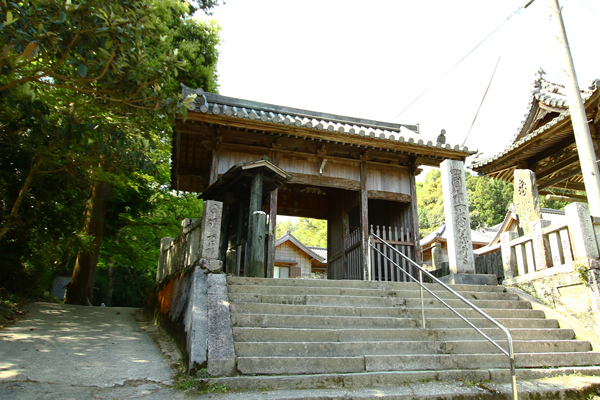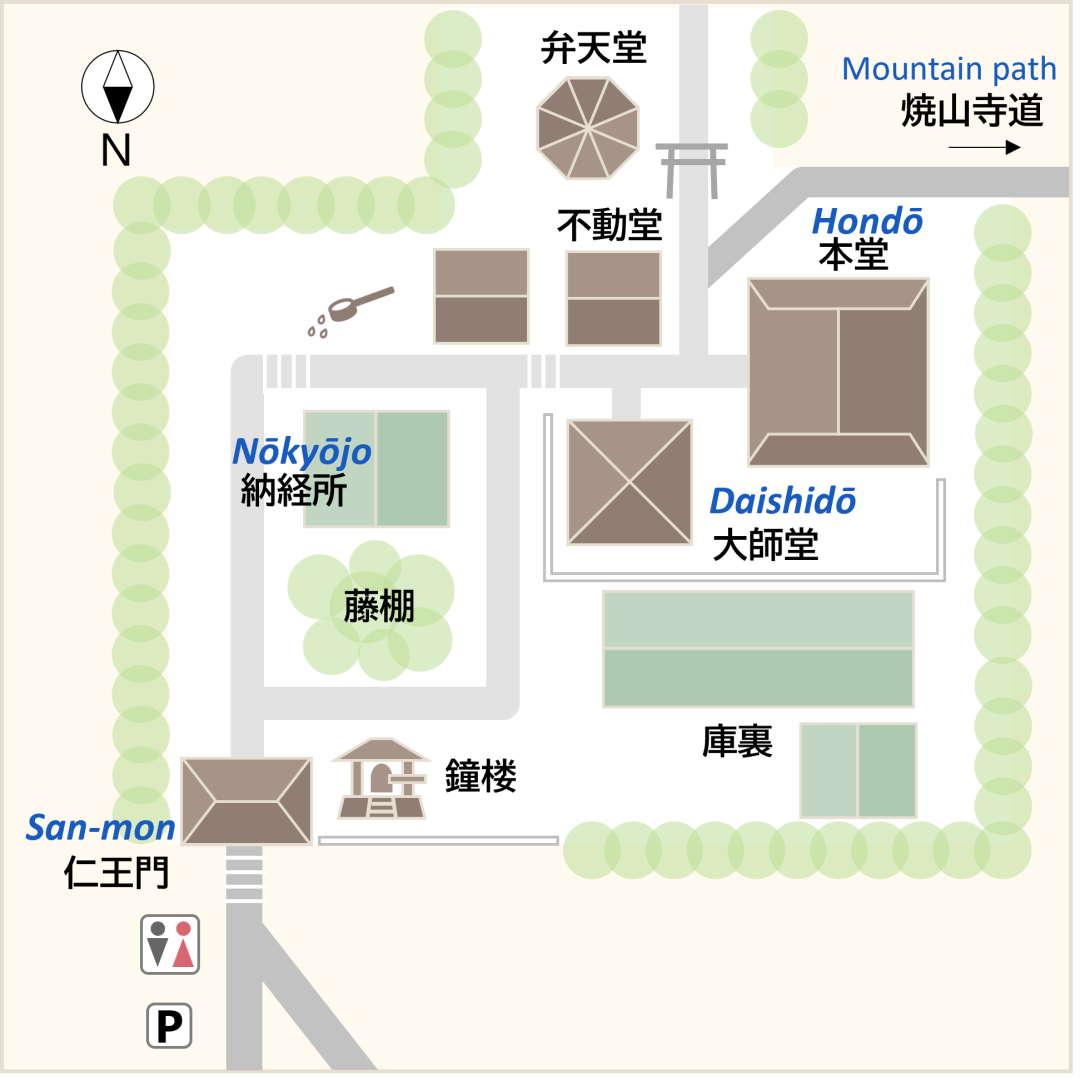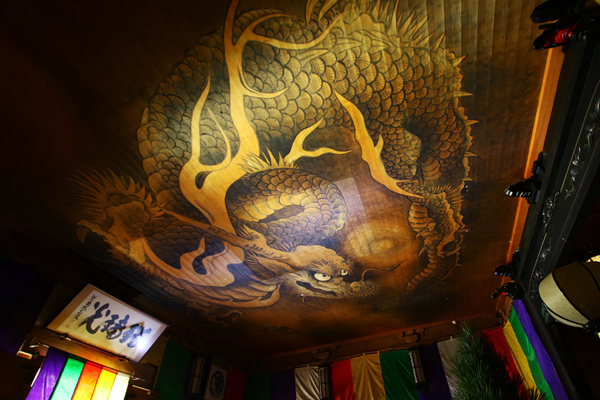The Shikoku Pilgrimage Temple Guide
Temple 11, Fujiidera

Precinct map

History of the temple
The Yoshino River, one of the two largest rivers on Shikoku Island, with a length of 236 kilometers, flows through the northern part of Awa (Tokushima). Going south from Kirihataji, if you cross the Awa Chuo Bridge and continue for three kilometers, you will come to Fujiidera. Kobo Daishi came here in 815, attracted by this sacred place surrounded by mountains on three sides, with clear mountain streams. Because he was 42 years old, the age of yakudoshi (the age of bad luck for men according to Japanese folk belief), he held a goma Buddhist ritual here. Then he carved a statue of Yakushi Nyorai (Medicine Buddha) and built a temple to exorcise his own misfortune and to bring peace to all people. On a rock about 13 meters square, about 200 meters above the temple, he built a fire altar for Buddhist rituals. This rock is called Kongofue (Solid and Unbreakable as Diamond). He practiced asceticism for 17 days on this rock. The name of the temple, Fujiidera (Wisteria Temple), comes from a legend that he planted five-colored wisteria vines in front of the temple.
The temple flourished as a center of Shingon Esoteric Buddhism and developed into a large temple with seven halls. However, during the Tensho period (1573-92), the entire temple was destroyed. It was revived in the early Edo period (1603-1868). In 1674 Nanzan Kokushi of the Rinzai sect, who was deeply trusted by the lord of the Awa, revived the temple and changed its sect to Rinzai Zen. In 1832 the temple was destroyed by fire again, and all but the principal image was lost. The present temple was rebuilt in 1860. The principal image is a National Important Cultural Property and is popularly known as Yakuyoke Yakushi (Yakushi Nyorai to ward off evil spirits).
From Fujiidera to the next temple, Shosanji (Temple 12), visitors can follow the old henro (pilgrim’s) trail, which retains the appearance of the old days. You can see where Kobo Daishi took a rest during his ascetic practice. There are also many stone Buddhas and other stone markers along the trail.
Highlights
Old wisteria vines
It is said that Kobo Daishi planted these vines after praying for the eradication of an epidemic. Wisteria vines of five colors bloom from late April to early May.
Dragon and Cloud Ceiling Painting
On the ceiling of the Hondo is painting of a huge dragon that covers about 55 square meters. It was painted by a local artist in 1977.
Henro Korogoshi
The term henro korogashi means that the road is so steep that pilgrims tumble down the mountain. It is a steep, narrow, 13-kilometer mountain trail to Shosanji (Temple 12). It can take up to eight hours for men and nine hours for women to complete. It is one of the most challenging parts of the pilgrimage.

Details
Names: Kongōzan, Ichijōin, Fujiidera
Denomination: Rinzai Sect ,Myoshinji school
Principal Image: Yakushi Nyorai
Founder: Kobo Daishi
Founded: 815
Access
Address: 1525, Inoo, Kamojima-cho, Yoshinogawa City, Tokushima 776-0033
Phone: 0883-24-2384
Parking: There is a parking lot named Honke Fujiya in front of the temple. (Phone 0883-36-1037) Open during hours of worship. 300 yen (short stay) / 500 yen (all day)
Lodging: None
Official website: None
